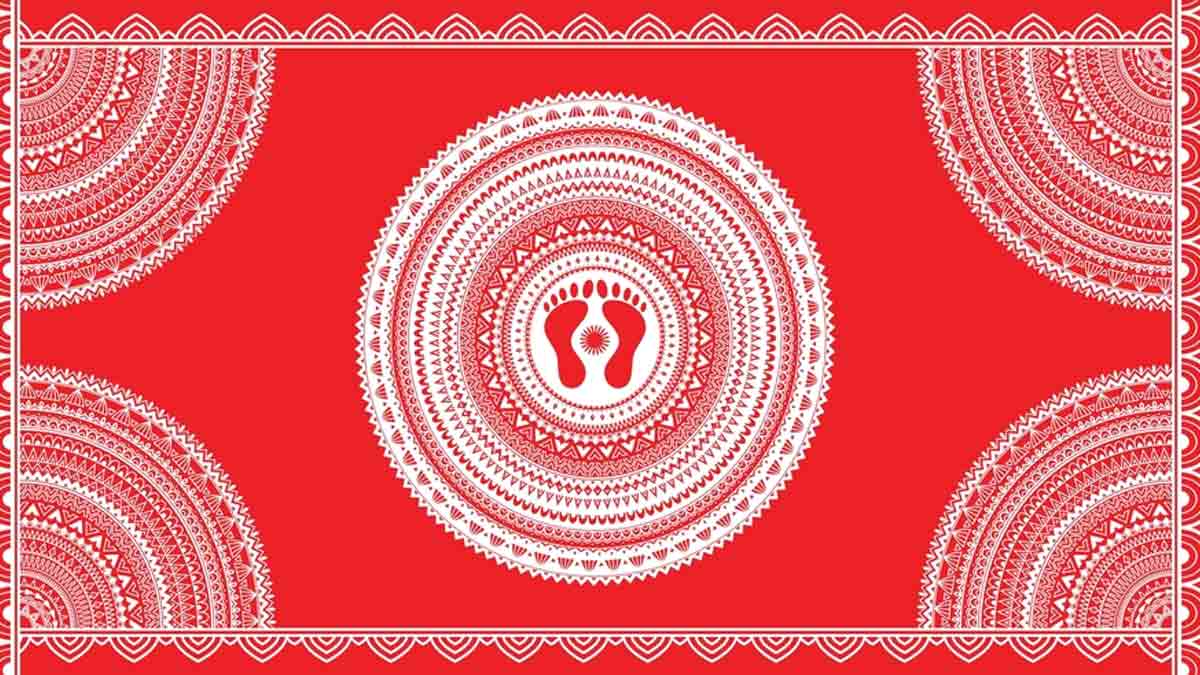
Diwali 2023: How To Make Uttarakhand’s Traditional Pahadi Aipan Rangoli For Diwali
Rangoli is an integral part of the Diwali festival. It is a traditional art form that involves creating intricate patterns on the floor using various materials such as rice flour, coloured sand, flowers, or petals. Rangolis are created to welcome the Hindu goddess, Lakshmi, who is believed to bring wealth, happiness, and prosperity to the household. The designs of Rangolis vary according to the region, but the essence remains the same. One such interesting rangoli that you can make this Diwali is the Aipan Rangoli
What Is Aipan Rangoli?

The Kumaon region of Uttarakhand is home to the rangoli style known as Aipan. Traditionally, a surface called geru, a mixture of wet ochre mud, was used to draw Aipan using a paste made of rice flour, or bisvar.
During Diwali, people draw the Laxmi Padchinha, a picture of the goddess Laxmi's footprints, from their home's main door to the temple in their house. This is done to welcome the goddess of wealth and obtain her blessings for the coming year.
History of Aipan Rangoli
Aipan art originated from Almora in Uttarakhand. It was at its peak in the Kumaon area under the Chand dynasty. The community's beliefs and numerous elements of nature serve as inspiration for the patterns and themes.
Where Is Aipan Rangoli Made Of?
Different Aipan patterns are used for different occasions and festivals, and they can be seen in courtyards, doors, and puja rooms inside homes. They are drawn alongside the front courtyard and the house's main entry door. Where the Goddess' idol is set up and worshipped on Diwali is known as the Laxmi Peeth.
1
2
3
4
Making an Aipan Rangoli is a beautiful and fulfilling experience. It not only creates a stunning and personalised work of art, but it also carries a deep cultural significance that connects you to the rich history of India.
Aipan Rangoli is traditionally done on a flat surface, preferably on the floor that has been wiped clean. Aipan Rangoli usually consists of geometric shapes and patterns that have a deep significance in Indian culture. You can also create your design and personalise it.
So this Diwali try this traditional Pahadi Aipan rangoli at home to welcome goddess Laxmi.
Don't miss: Diwali 2023: Light A Lamp At This Place In Your House To Get Rid Of Negative Energy
Materials To Make Aipan Rangoli:

1. Red soil (geru)
2. White rice flour (biswar)
3. A small bowl
4. A spoon
5. A toothpick or matchstick
Don't miss: Diwali 2023: Expert Tells Us Astrological Tips And Remedies For Wealth And Prosperity
How To Make Aipan Rangoli:
1. In a small bowl, mix the red soil and white rice flour (DIY Rice Flour Face Packs For Glowing Skin) to form a paste. Start by outlining your design with a pencil. This will help guide your hand while you are drawing the aipan rangoli.
2. Using the spoon, apply a thin layer of the paste to the floor or wall where you want to make your rangoli.
3. You can create borders around your aipan rangoli using the same pencil or by using a small size stencil. Use the toothpick or matchstick to draw your design in the paste. You can use geometric shapes, religious symbols, or any other designs that you like.
4. Using the mixture of rice flour and colours, begin to fill in each outlined section of your design. Use a small spoon to sprinkle the mixture onto the surface.
5. Aipan Rangolis can be further decorated with the help of natural objects such as flowers, leaves, and diyas.
6. Once you have finished drawing your design, let the Aipan Rangoli dry for at least an hour.
7. Once the paste is dry. Your Pahadi Aipan rangoli is now complete.
For more such stories, stay tuned to HerZindagi.
1
2
3
4